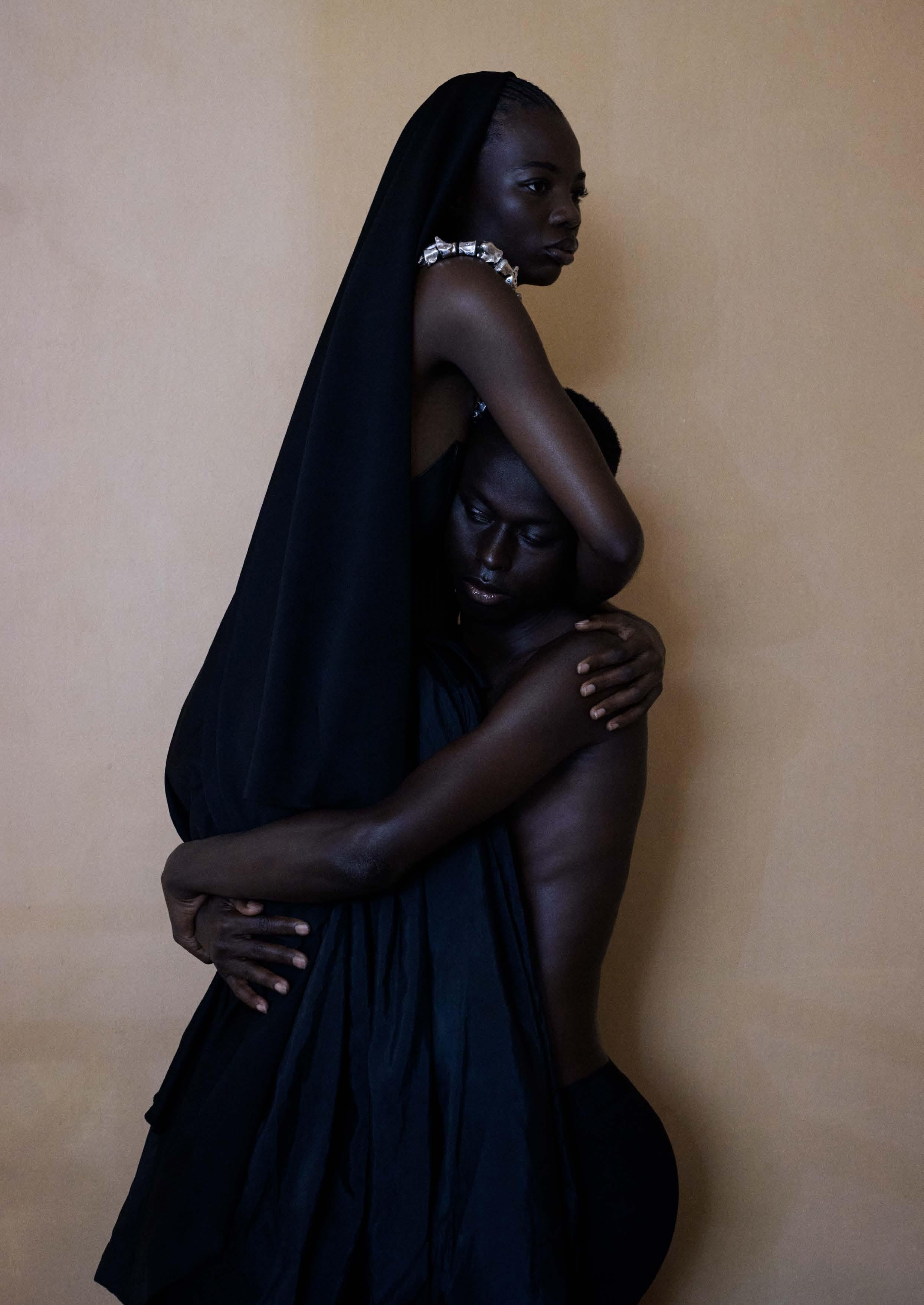

Unapologetic gazes mirror the equally unapologetically bold, fiery silhouettes from Duaba Serwa’s collection



Unapologetic gazes mirror the equally unapologetically bold, fiery silhouettes from Duaba Serwa’s collection
Welcome to the inaugural HOMEGROWN Digital Issue of Manju Journal. A special editorial shot and produced in the vast expanse of Northern Ghana, Tamale. Like many burgeoning creative communities in Ghana, Tamale, Northern Region’s capital and one of the bustling hub for creativity & culture is fast becoming the creative outpost of the country from music to art, fashion and traditional dance. It also has the kind of authenticity and opportunities for chance encounters that artists always look for when searching for new places to make home. Creatively, the city has a rich inheritance and an ever-growing site of cultural production, education and exchange.
Our cover story ‘Mangoes from Tamale’ lensed by Lagos-based photographer Daniel Obasi experiments with new locational contexts to showcase sartorial creations from leading Ghanaian & Nigerian designers. From the streets of this vibrant city to Ibrahim Mahama’s artist-run project space Red Clay studio & SCCA Tamale, MANJU seeks to spotlight the uniqueness of Tamale and expand visual narratives of Ghana beyond Accra while ensuring that the rich plethora forms of creativity coming out from Africa are given the spotlights they deserve.
The creation of this zine was a special one and we hope you enjoy reading this issue as much as we loved putting it together for you.
With love, Team MANJU

“
CITY OF GHANA’S NORTHERN REGION, BEARS A RICH YET OFTEN OVERLOOKED CULTURAL HERITAGE. THE CITY’S NAME TAKES ITS MEANING FROM THE LOCALLYSPOKEN DAGBANI WORD FOR ‘SHEA FRUITS’, INDIGENOUS TO THE REGION.
Home to thriving artisanal craft scenes of indigo dying, leatherwork, pottery and mask-making, as well as schools serving most of Ghana’s Northern Region, Tamale is an ever-growing site of cultural production, education and exchange.
Woven into the architectural fabric of Tamale is a medley of old and new structures. Traditional, conical-shaped homes made from adobe bricks - composites of local clay, sand, straw and water, co-exist with contemporary structures such as the renovated Tamale Central Mosque and the Aliu Mahama Sports Stadium.


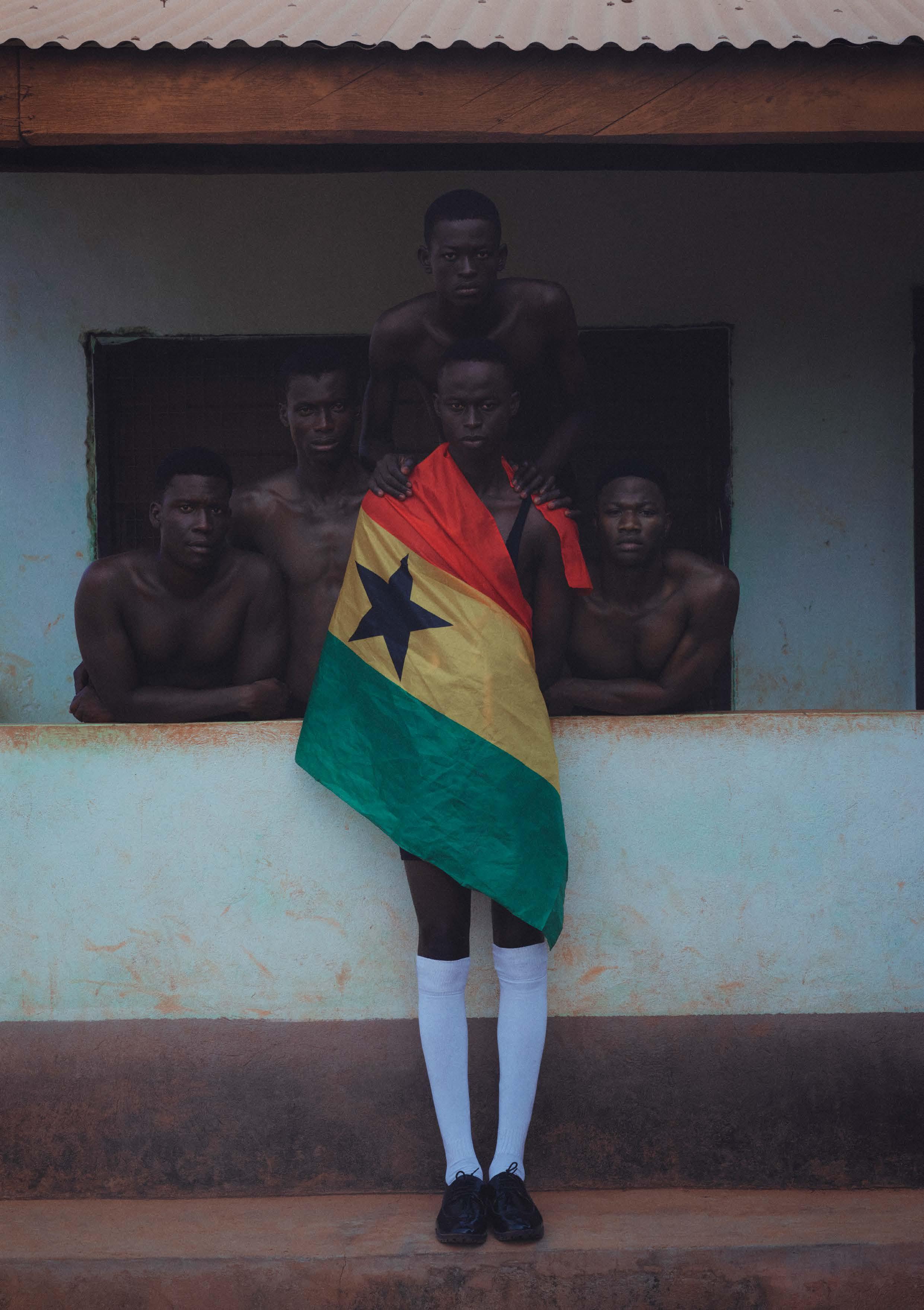
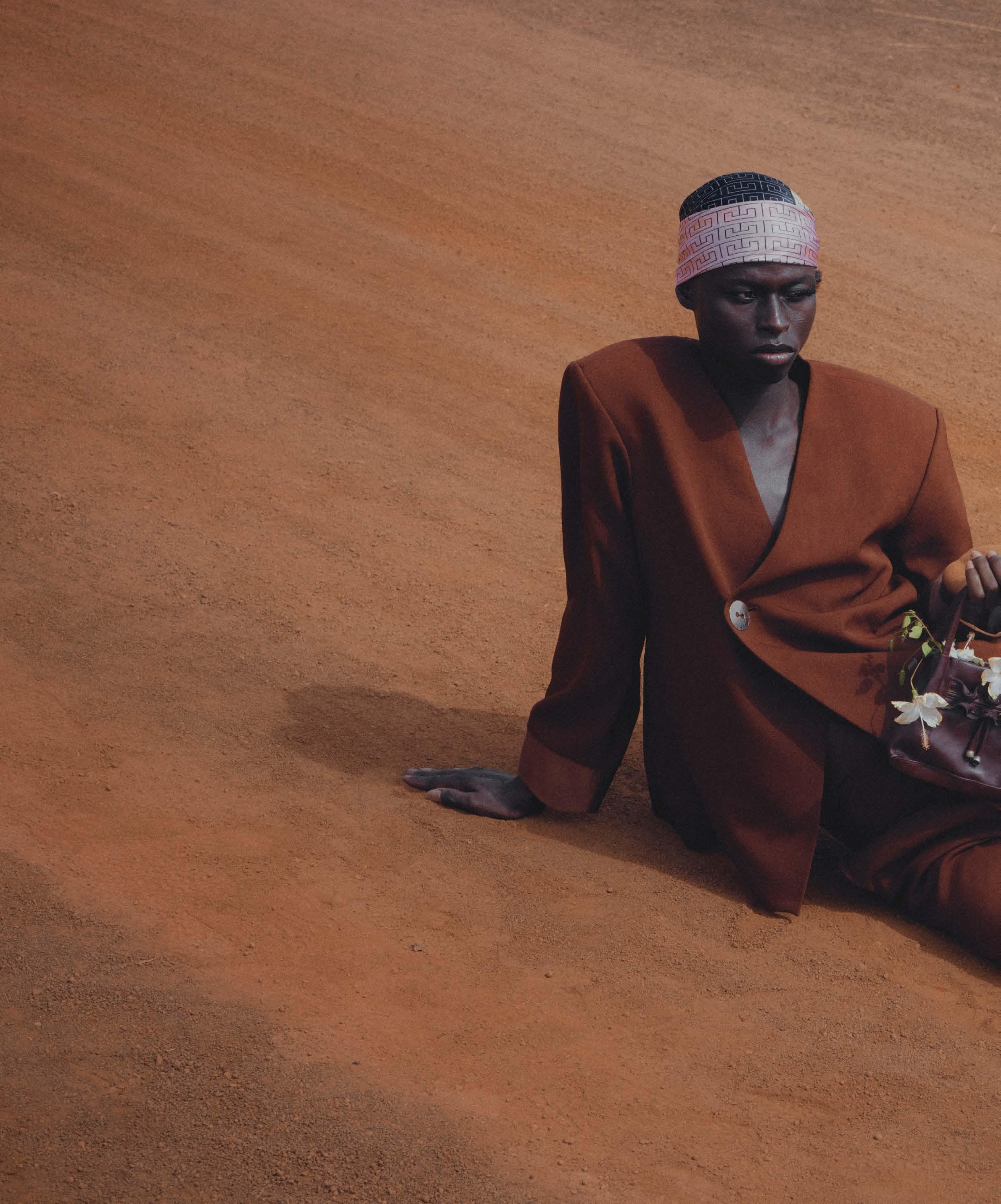
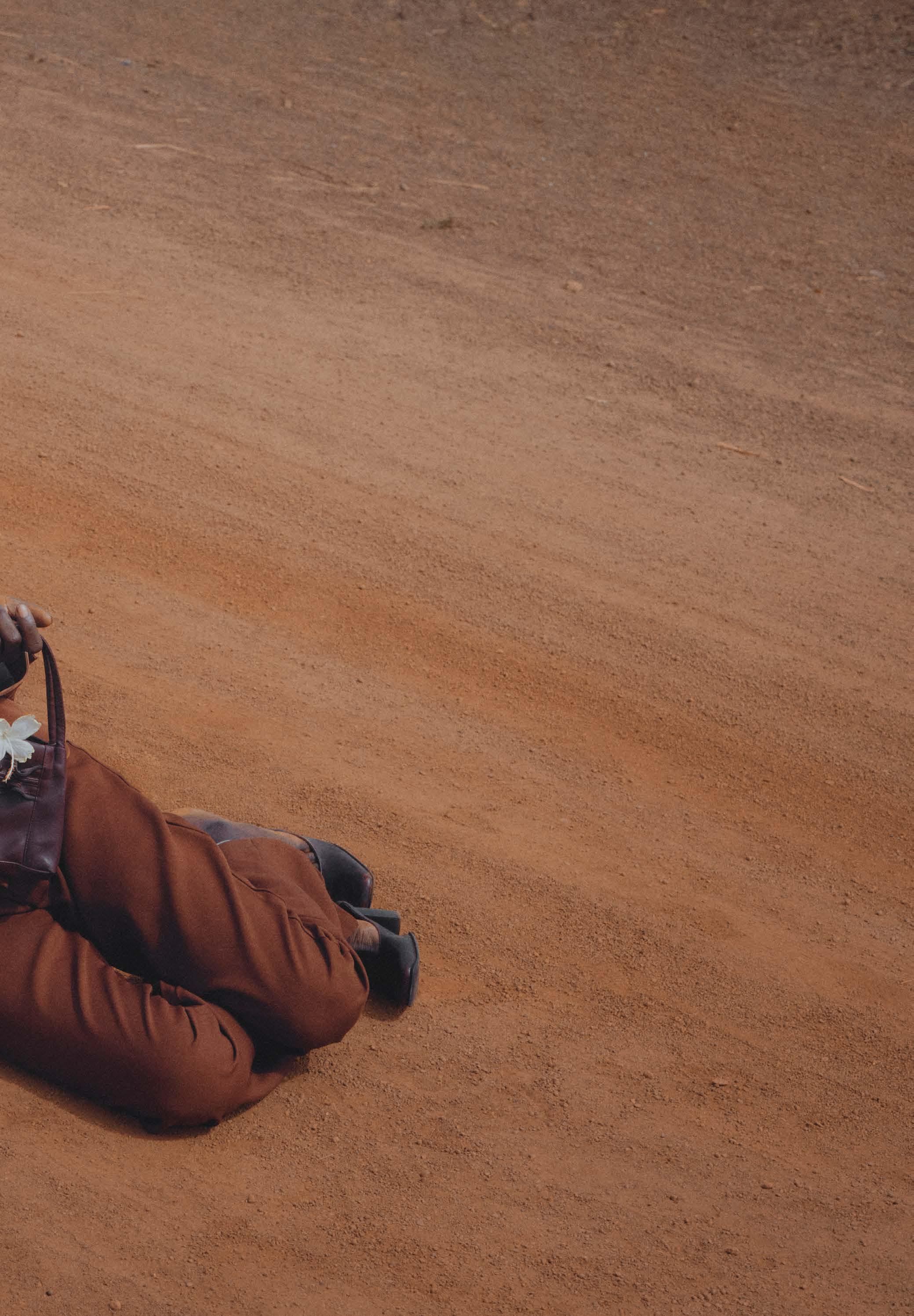
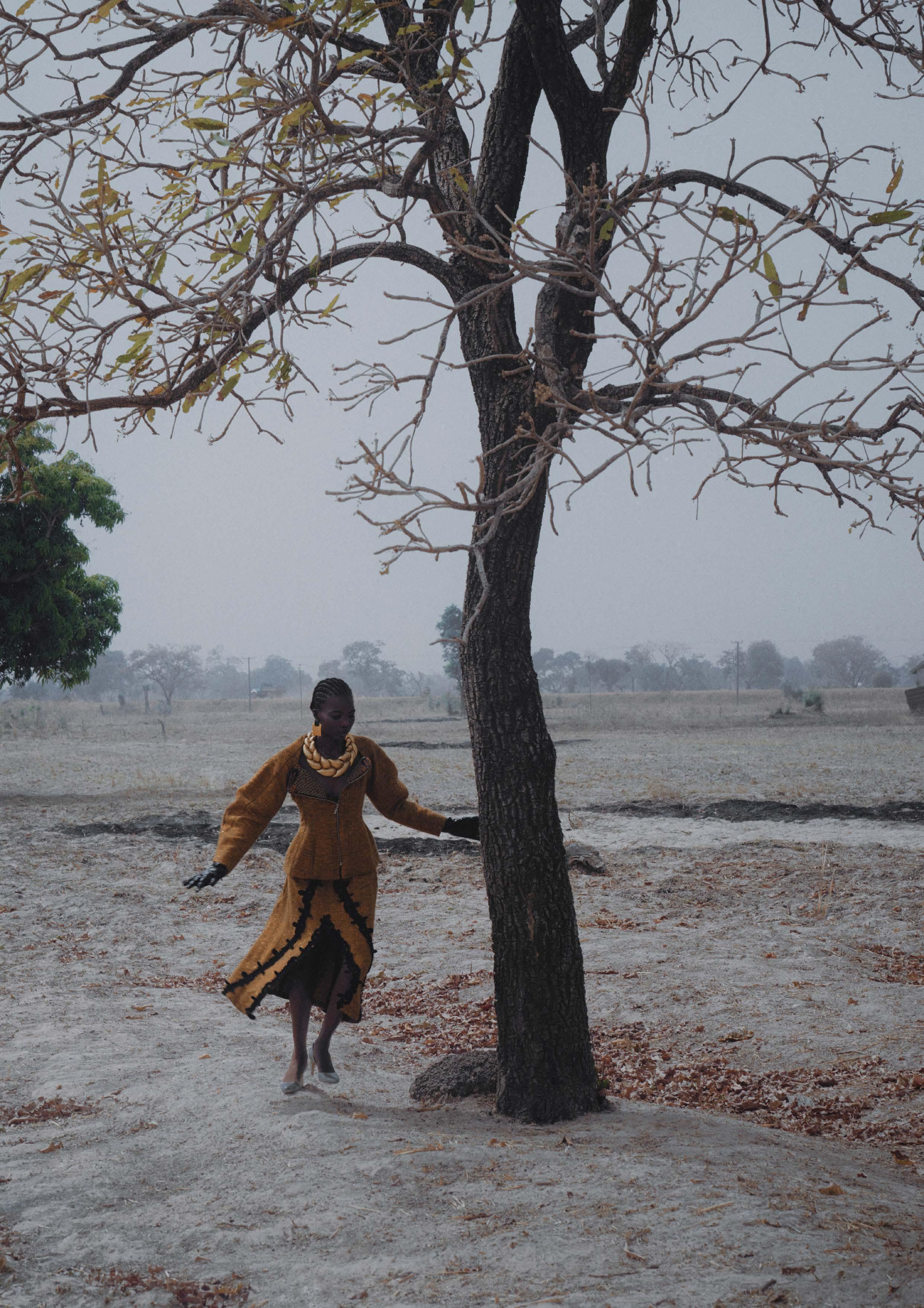
By rooting the editorial within this diverse architectural landscape, MANJU seeks to spotlight the uniqueness of Tamale and expand visual narratives of Ghana beyond Accra.
Over the last five years, Tamale-born and world-renowned contemporary artist Ibrahim Mahama has been developing spaces such as his Red Clay Studio, Nkrumah Volini and Savannah Centre for Contemporary Art (SCCA) - “an artist-run project space, exhibition and research hub, cultural repository and artists’ residency located in Tamale, Ghana - dedicated to art and cultural practices”.
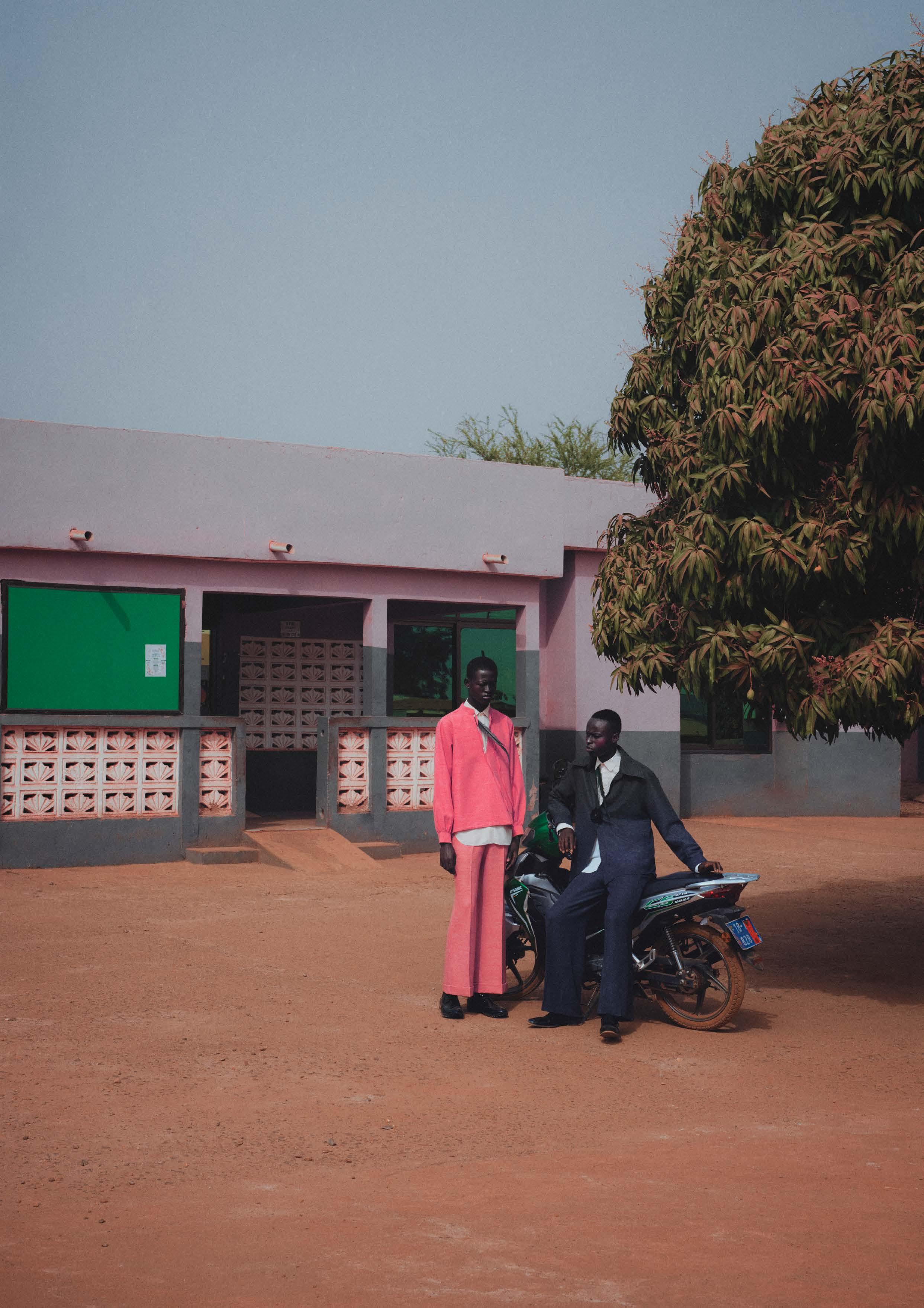
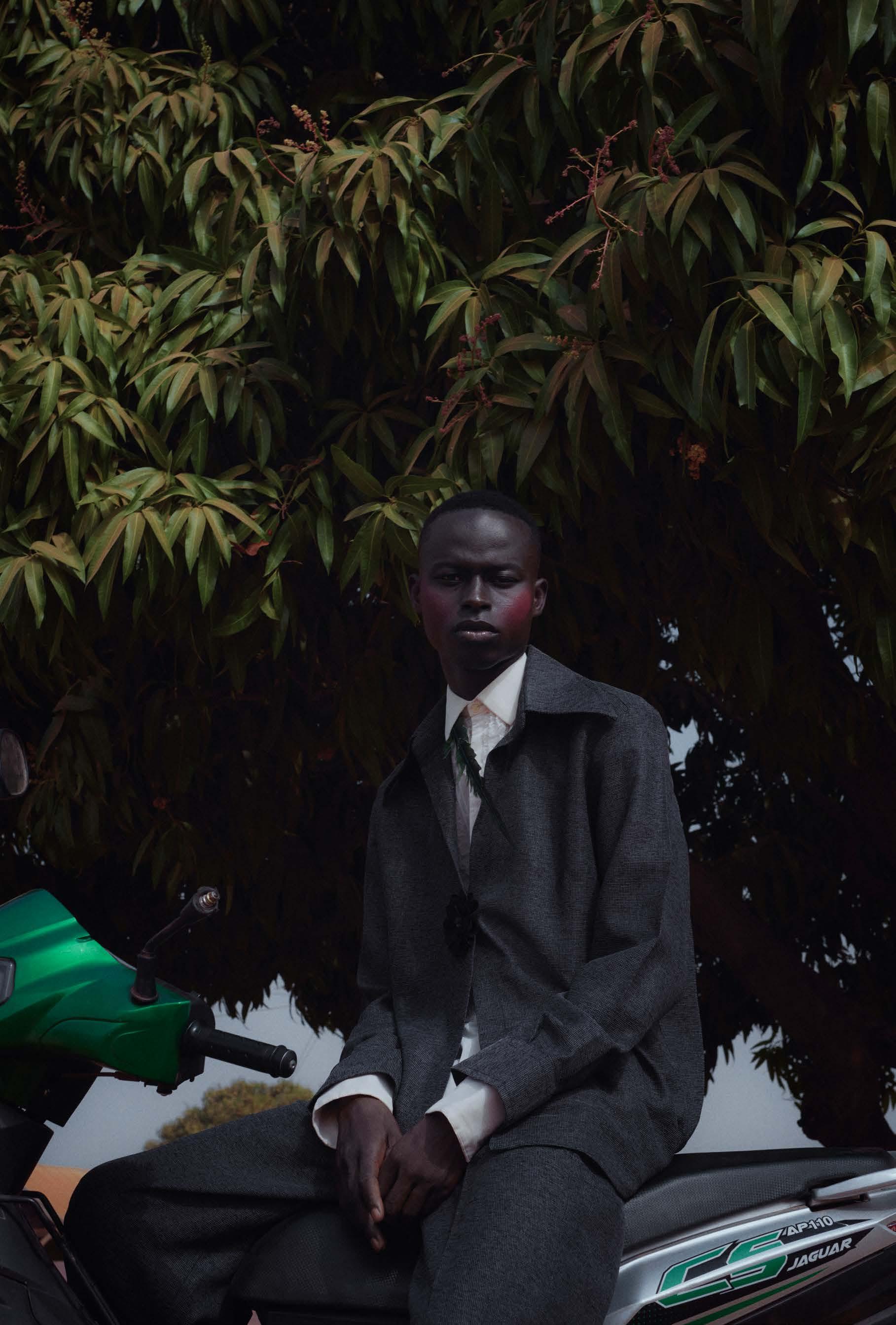
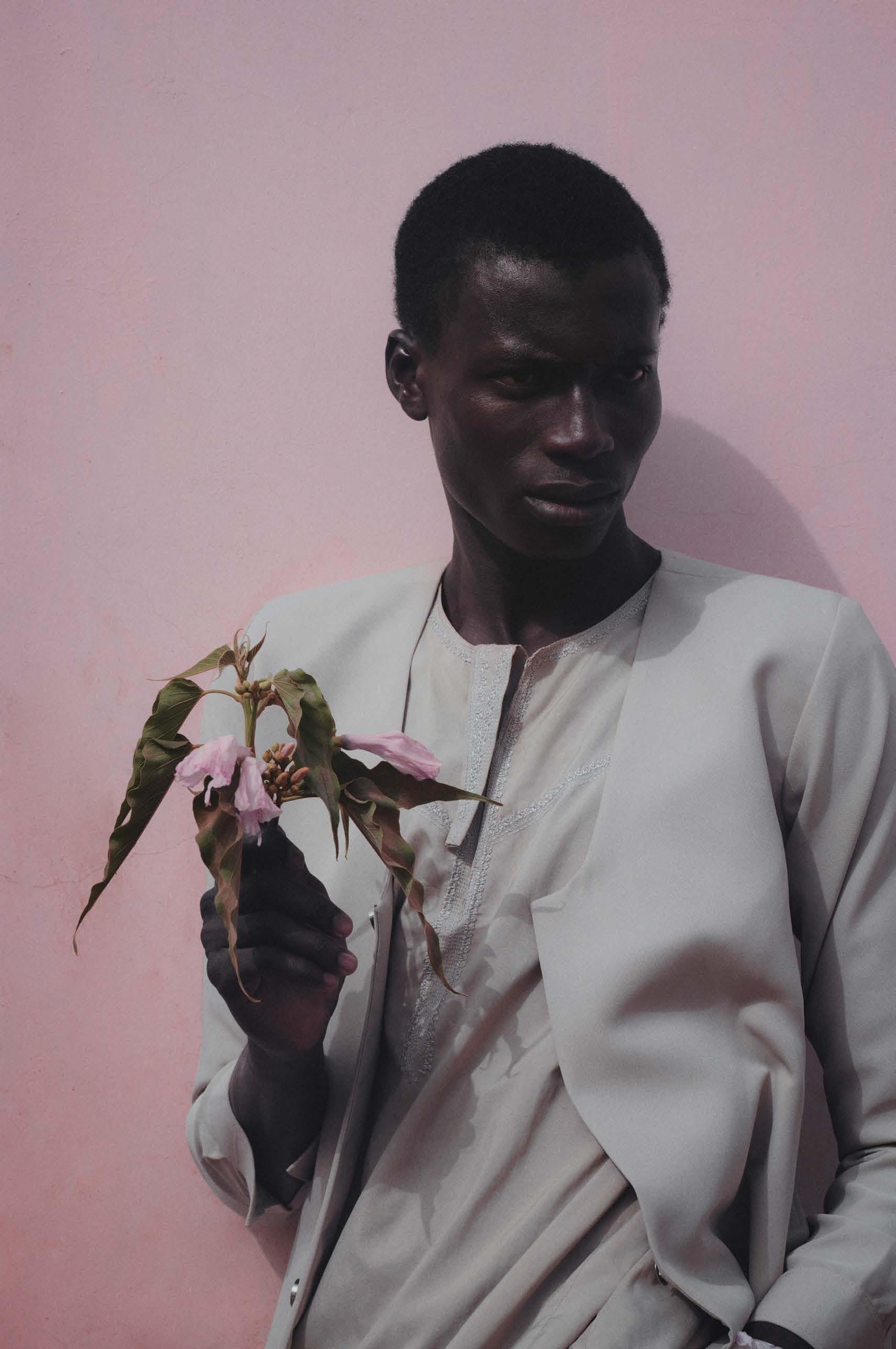
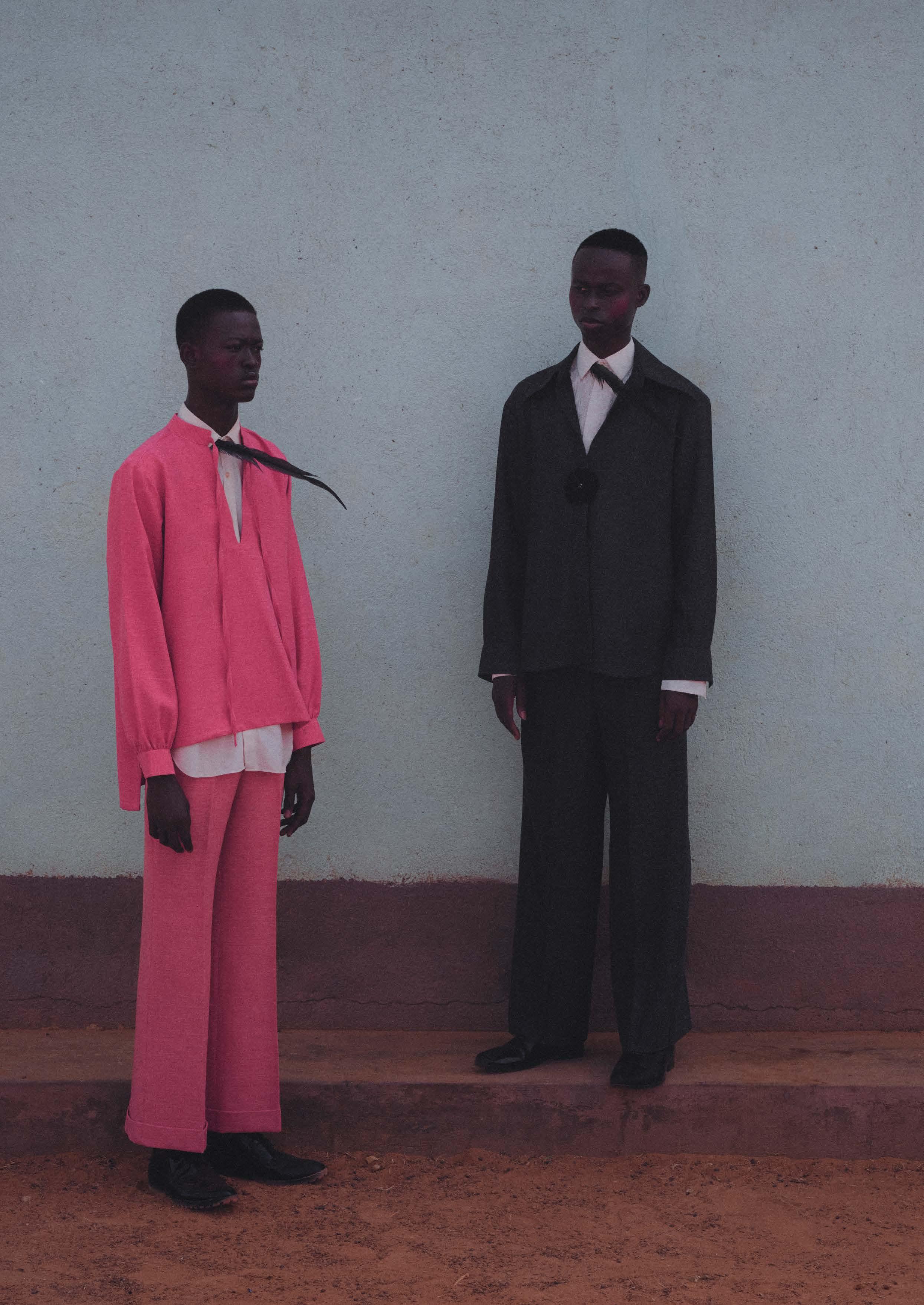
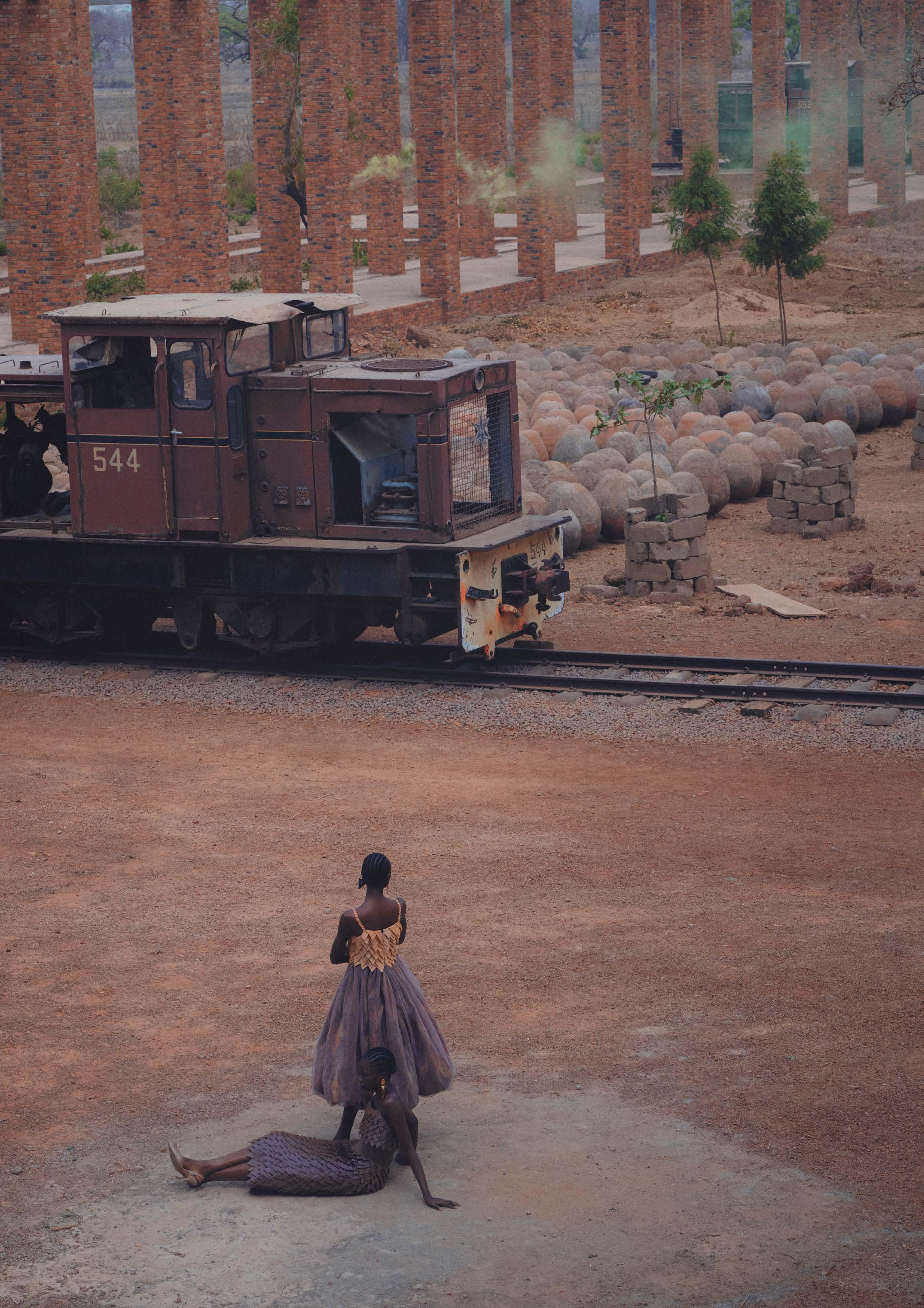
Unlike most artist-run ventures; the multi-acre site is open to and regularly visited by the general public, particularly students. In line with the artist’s long-established practice of repurposing and reappropriating materials, Mahama’s grounds also feature collections of colonial-era train carriages and decommissioned planes, now transformed into classrooms and libraries for local communities.
On the streets of Tamale, as well as against the backdrop of Mahama’s vast studio, this editorial experiments with new locational contexts to showcase sartorial creations from leading Ghanaian and Nigerian designers.
At times mirroring and at times contrasting, each fashion garment is carefully considered to interplay with its wearer and the varying architectural landscapes of Tamale.
Nigerian photographer Daniel Obasi brings his distinct sensitivity for exploring “sexuality, masculinity, beauty, cultural symbolism, Afrocentric fantasy and human relations” to this editorial entitled, “Mangoes from Tamale.”
Obasi deftly draws attention to the bold delicateness of Christie Brown’s collections, the striking angularity of Duaba Serwa’s robes, and the gender-defying, biodegradable materiality of Adjabeng’s pieces.
Obasi further emphasises futuristic silhouettes from Orange Culture, playful pigments from Lisa Folawiyo, vibrant weavings from Emmy Kasbit, as well as the elegance of VicNate, and audaciousness of Legacy World.
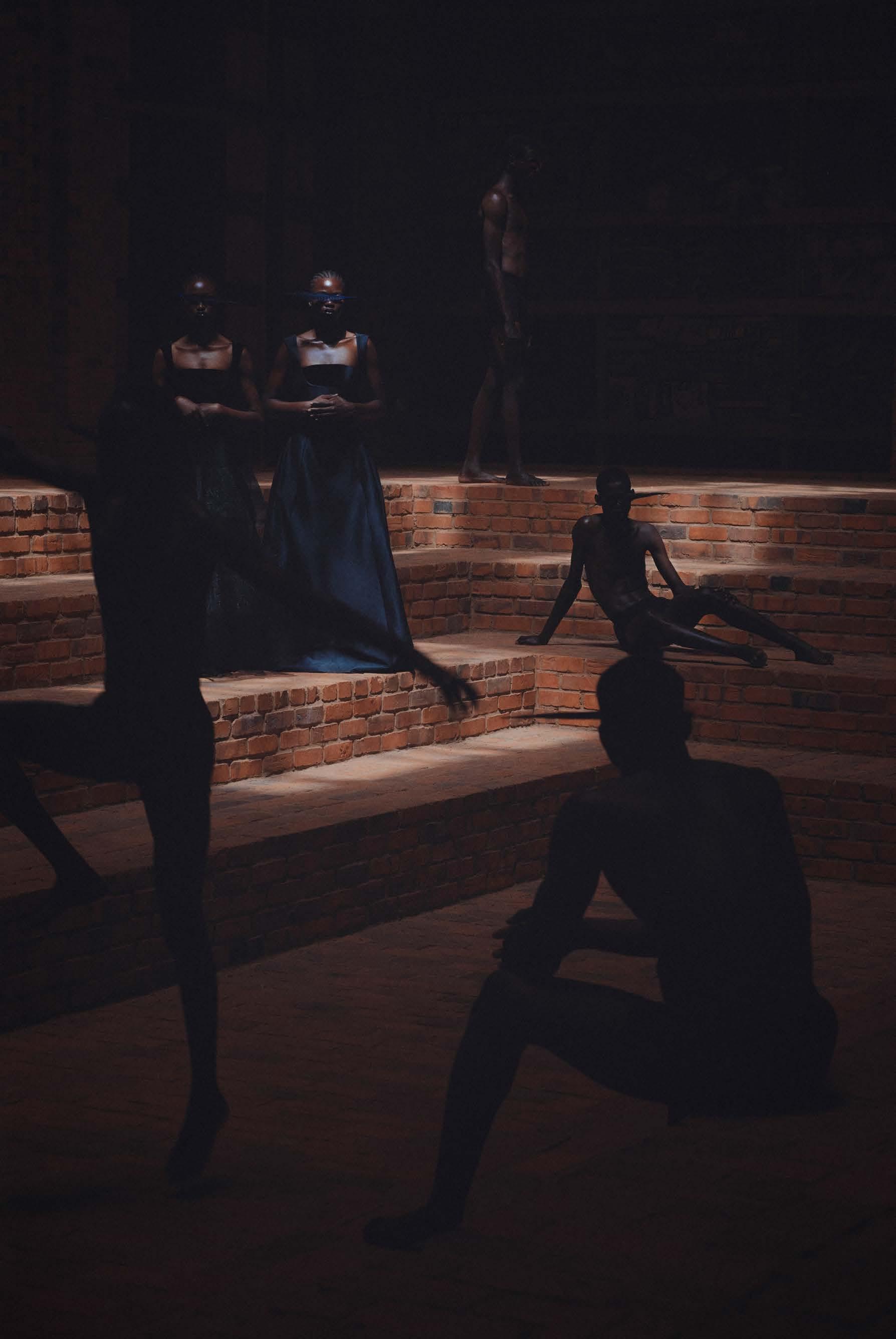
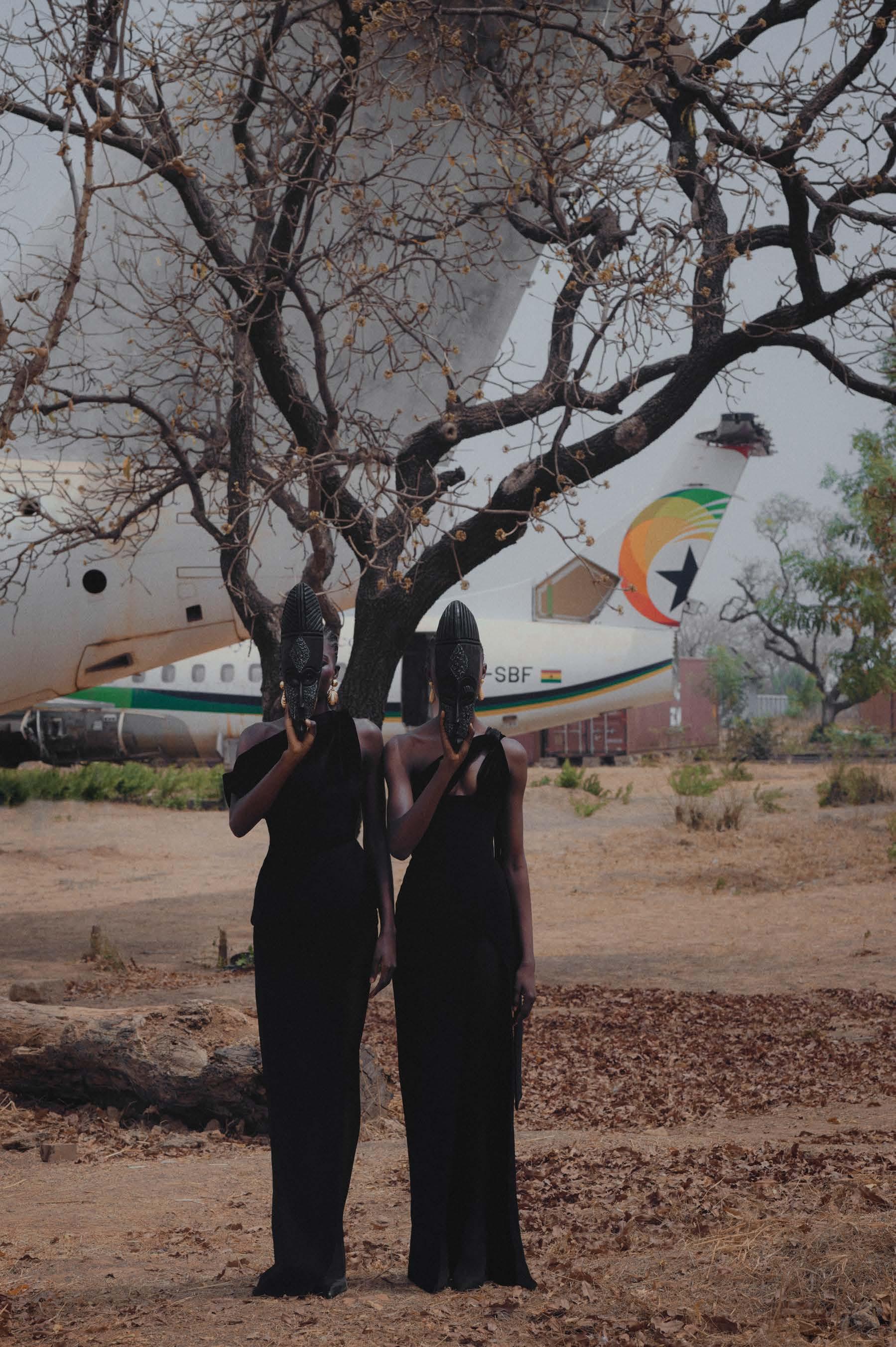
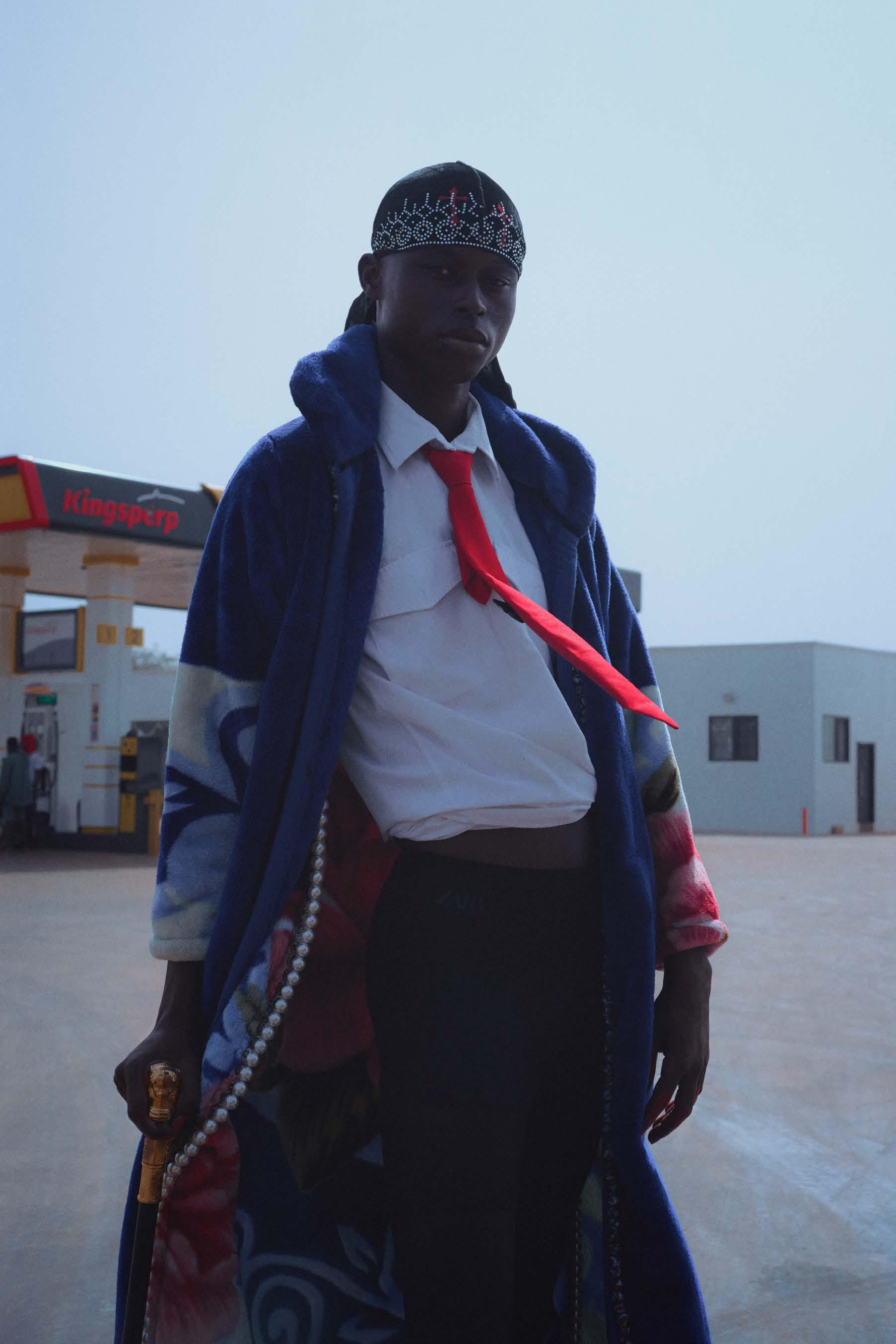
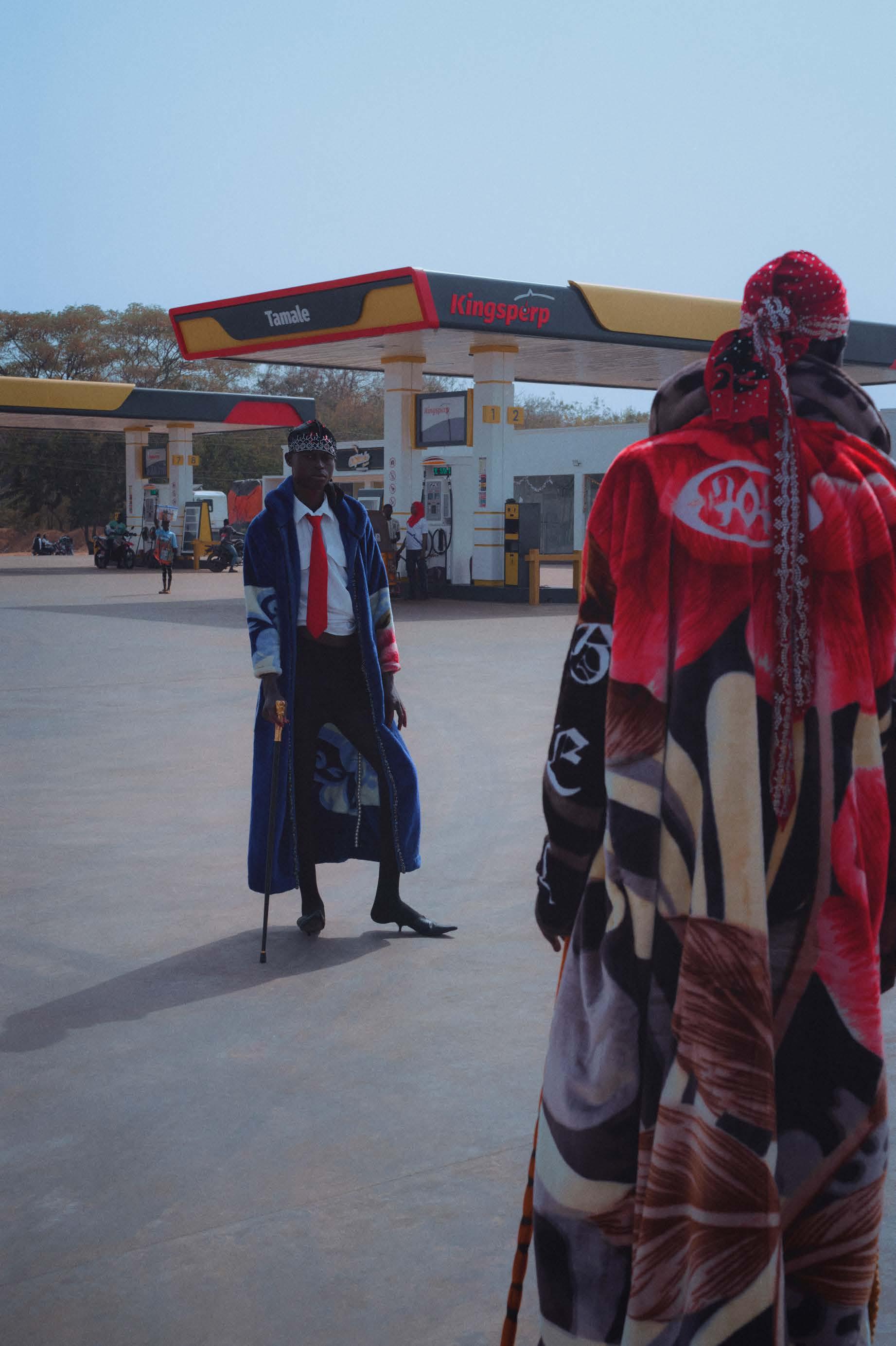


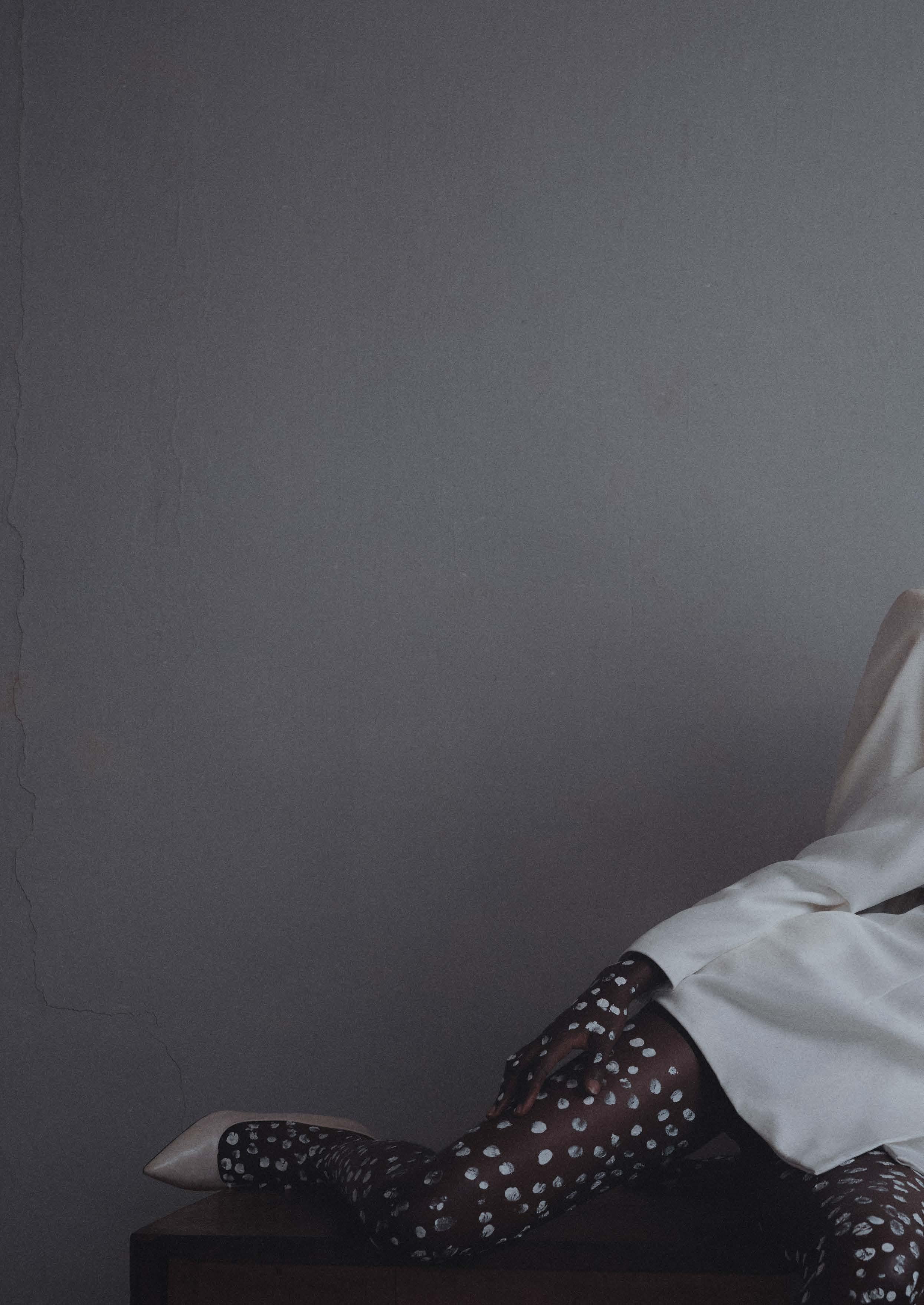
Orange Culture, Emmy Kasbit and Ajabeng’s gender-defying, minimalist designs exude timeless sophistication
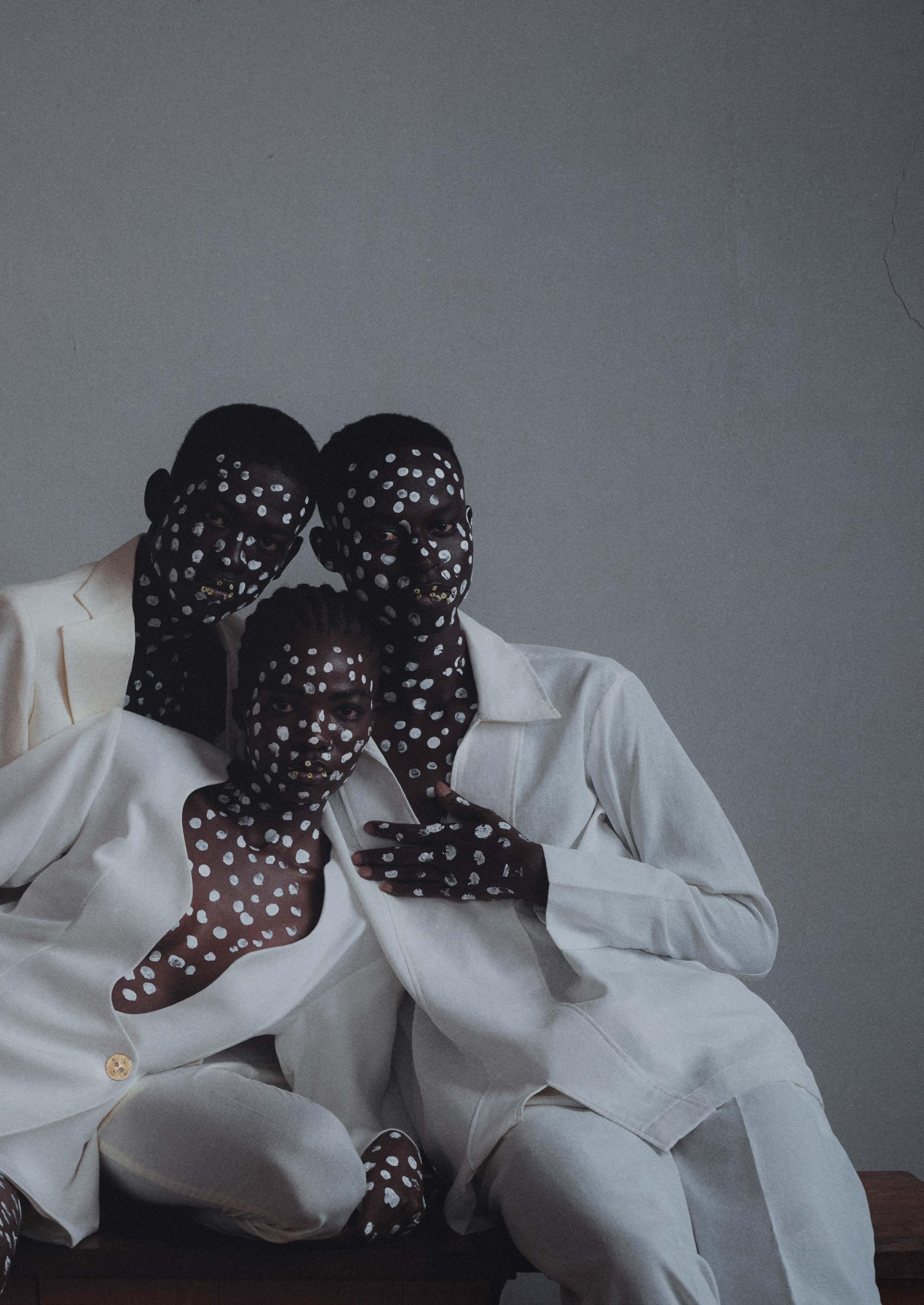
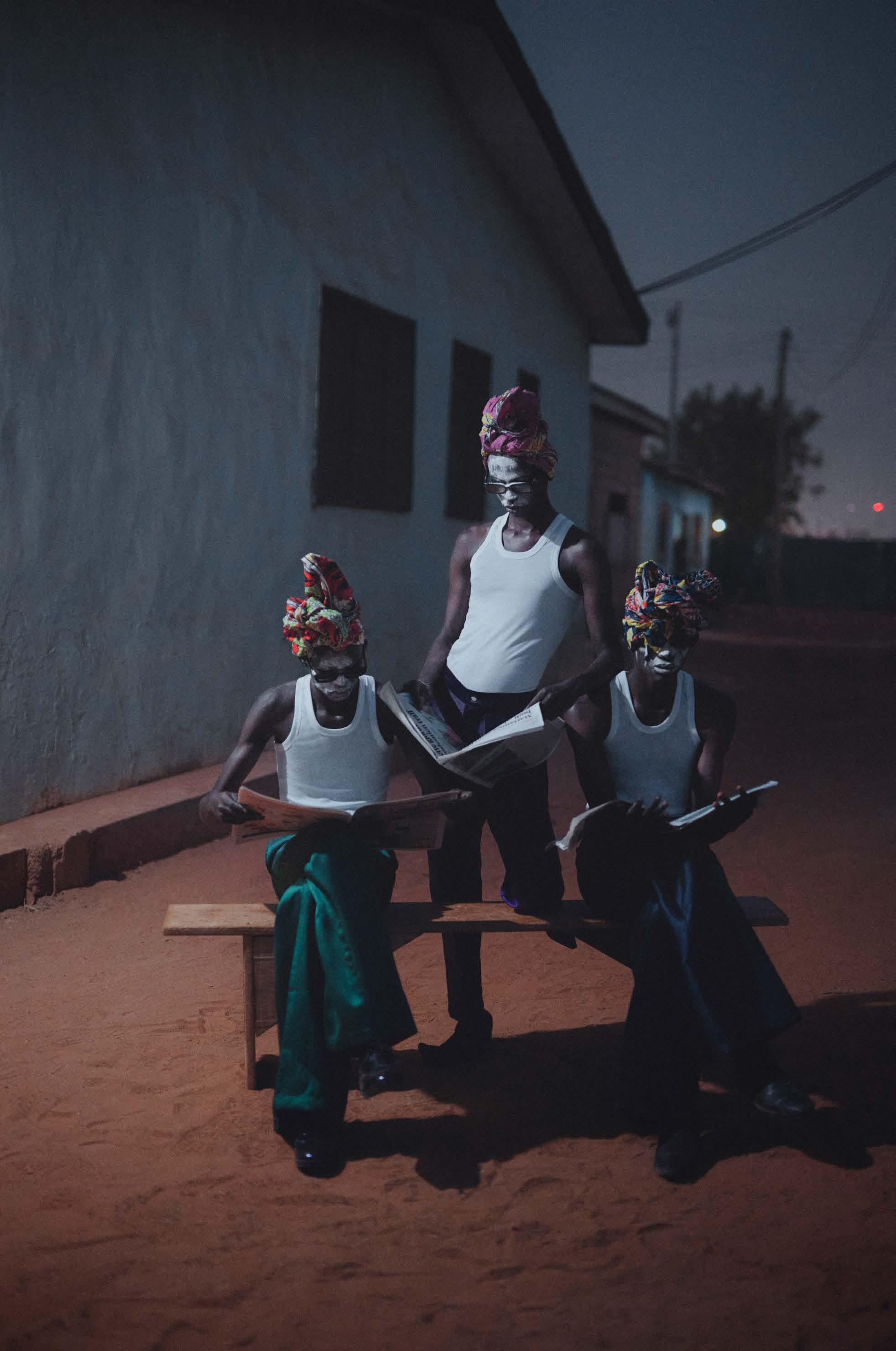
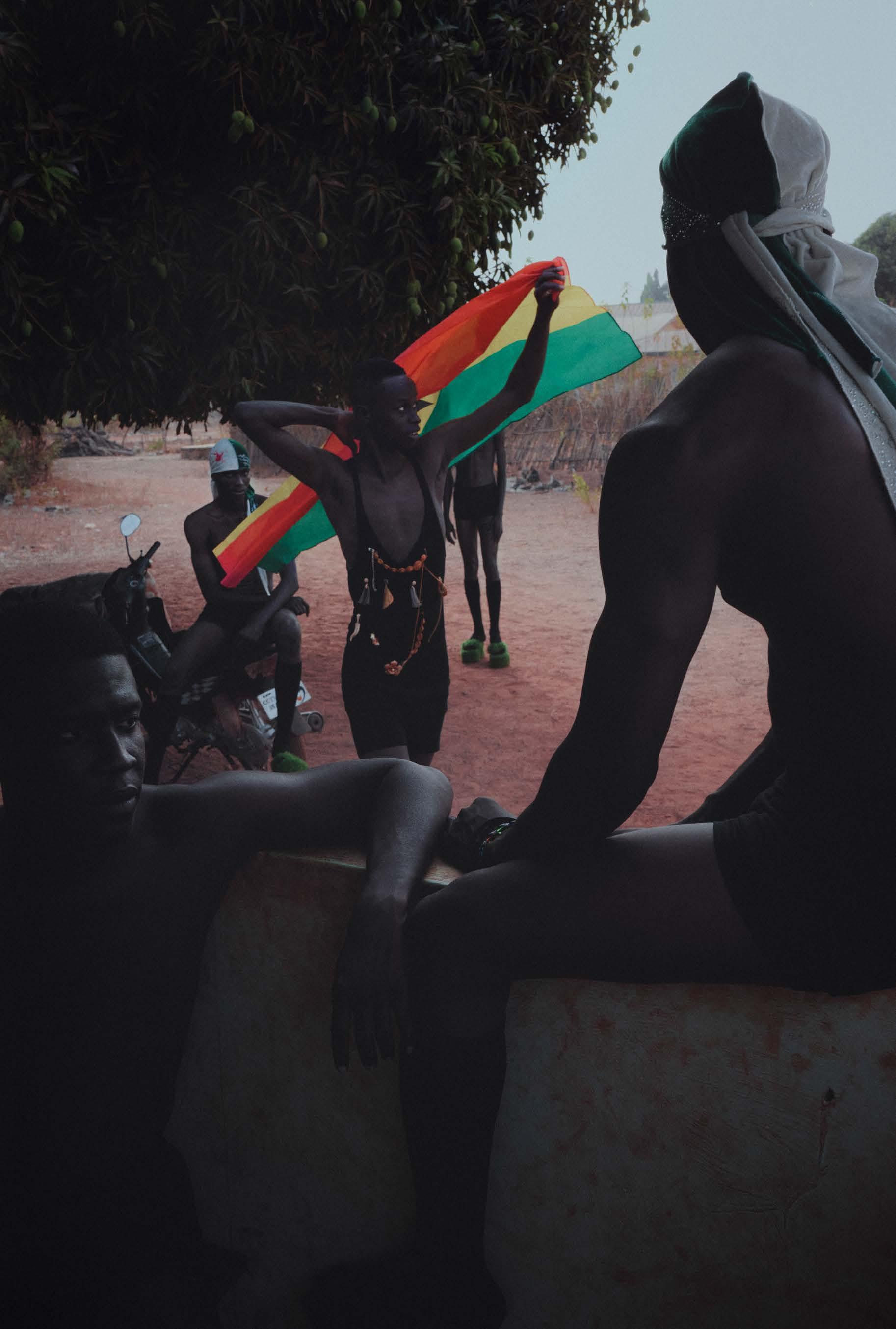
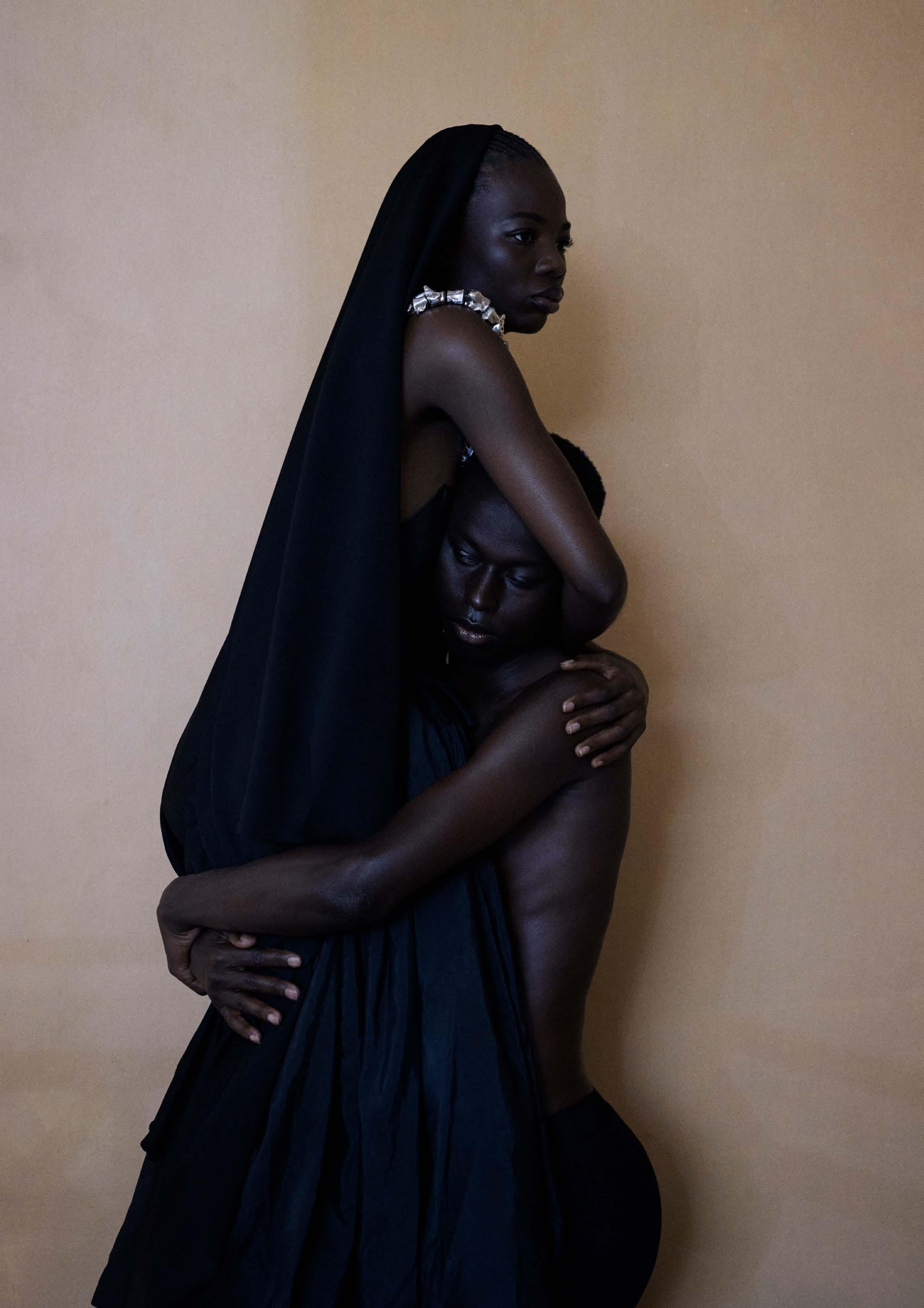
Two
Much like architecture, the art of designing and constructing built structures, fashion design can be seen as the art of designing and constructing wearable structures.
Both disciplines constantly navigate between function and feeling, convention and disruption, tradition and modernity. Explorations of these tensions and more come to life in the dreamy yet grounded visuals of the editorial.
As ever, MANJU’s commitment to celebrating the dynamism and ingenuity of contemporary African Art, Fashion, Design and Culture shines through this debut digital zine.
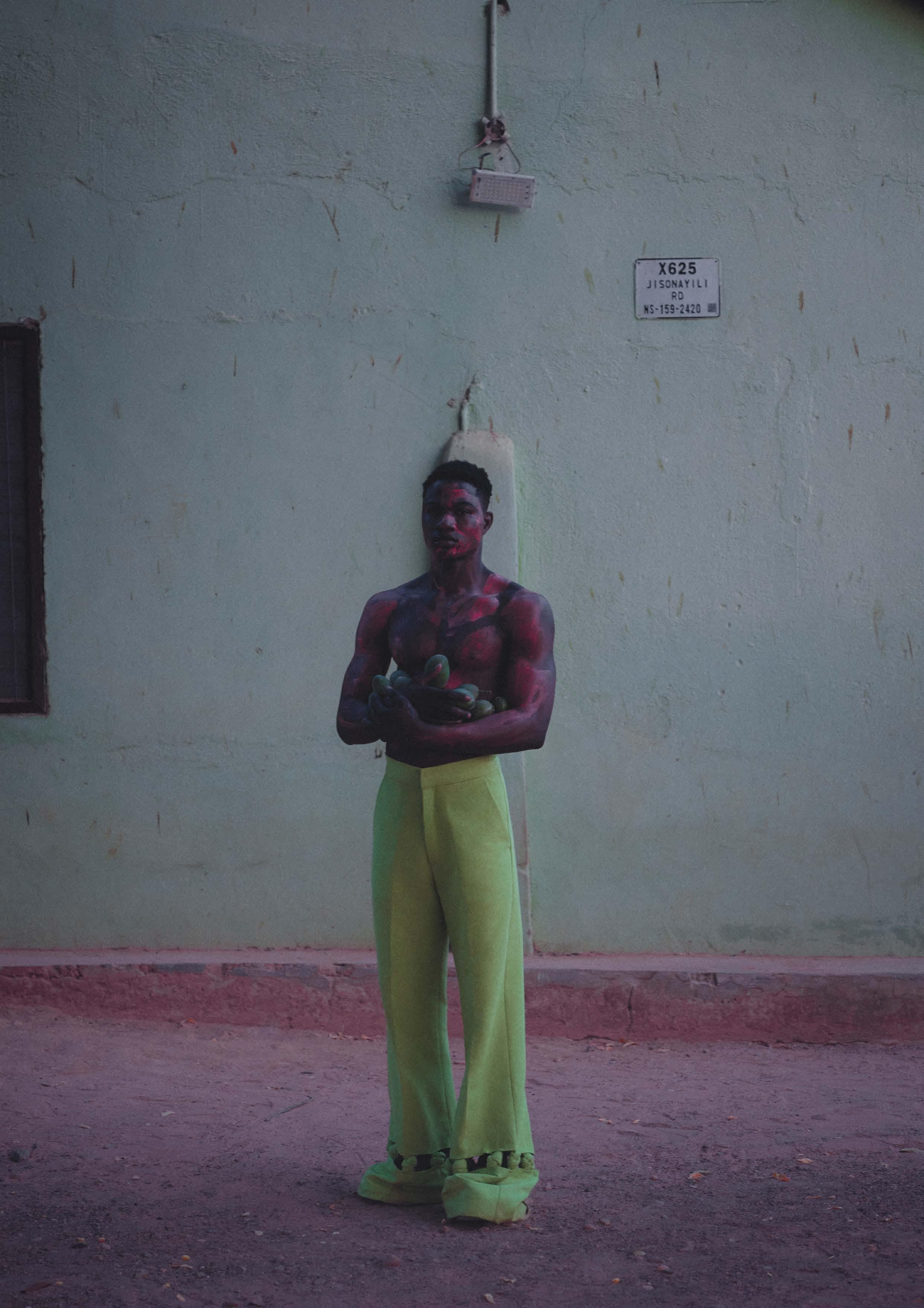



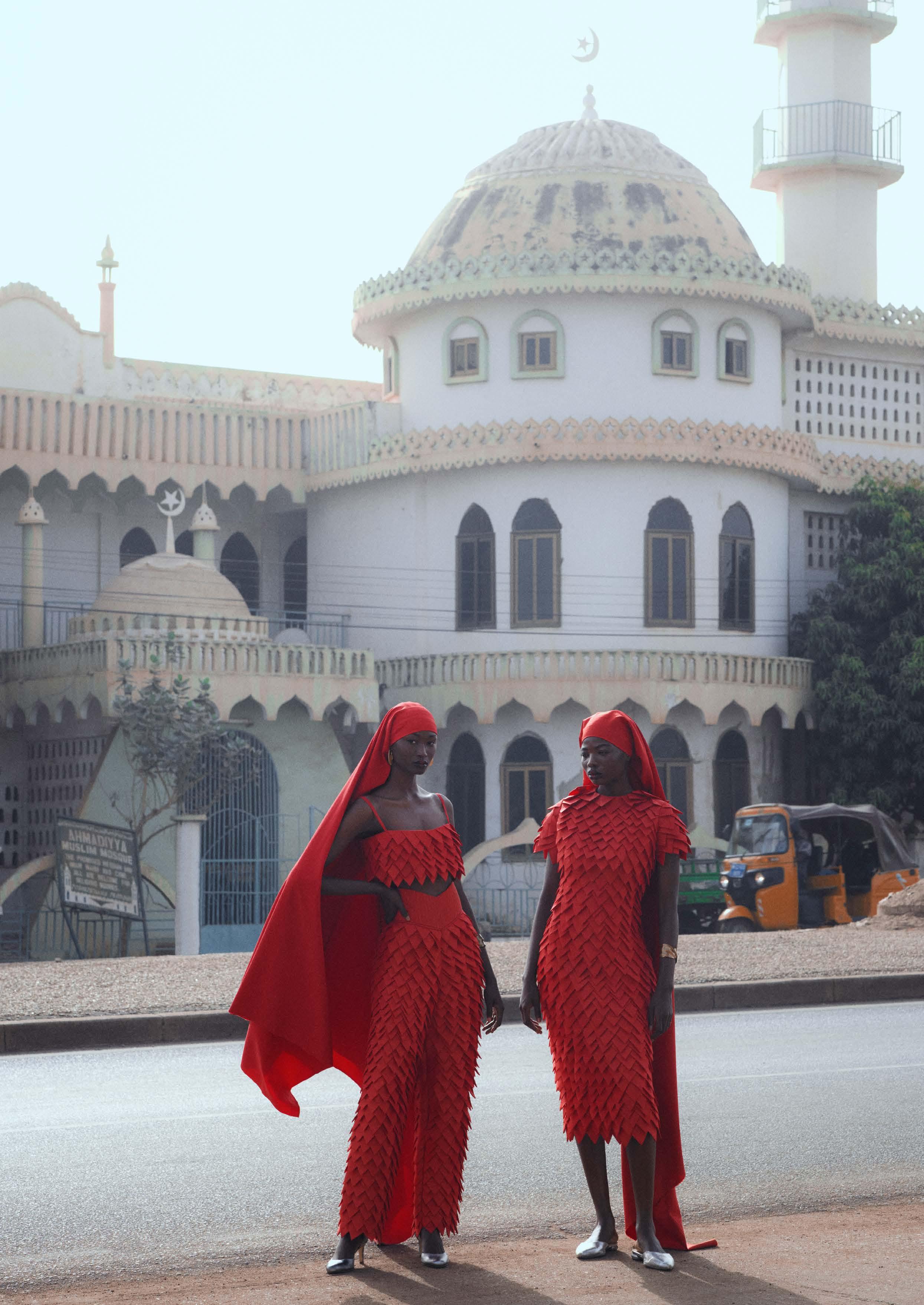
Models dressed in Duaba Serwa’s iconic triangular folds take up space on the streets of Tamale, mirroring the decorated façade of the Ahmadiyya Mosque behind

MANJU Journal is a digital platform and creative studio celebrating contemporary Africa and the diaspora at the intersection of Fashion, Design, Art and Culture. Its work is not tied to a particular industry or discipline, instead it champion creatives ranging from fashion designers and artists to photographers and visual storytellers. What links both its curation and commissioned work is a devotion to African visual culture, narratives and representations of those of African ancestry.
Our cultural creative studio collaborates with some of the world’s leading and progressive brands and institutions to amplify their vision through authentic African visual storytelling and narratives. From forecasting trends to activating ideas that rethink the status quo, the studio underwrites campaigns and projects with authentic cultural narratives, reaching influential audiences around the world. The studio works holistically across MANJU’s eco-system providing creative, consulting and programming. Partners include; Polaroid, The Africa Centre, London, Gucci, Burberry, Tommy Jeans and more.

Africa No Filter exists because many stories about Africa still lazily revolve around the single story of poor leadership, poverty, corruption, disease, and conflict. These stories fail to portray the other more progressive side of Africa and collectively perpetuate the narrative that Africa is broken, dependent and lacks agency. The result? Harmful stereotypes that continue to paint a rigidly negative picture of the continent, despite the massive strides we are making. Our mission at Africa No Filter is to shift these stereotypes because they impact the way the world sees Africa and how Africa sees itself. Through research, grant-making, community building and advocacy, we support storytellers to help shift the stereotypical narratives about Africa one story at a time.
Africa No Filter is an initiative of a donor collaborative funded by the Ford Foundation, Bloomberg, Mellon Foundation, Luminate, Open Society Foundations, Comic Relief, Hewlett Foundation, and the Hilton Foundation.
• Research: To better understand narrative by addressing questions that unpack African narratives and explore the impact on key development issues
• Grant Making: To invest in content creation and ecosystem building grants to support storytellers.
• Community Building: To elevate knowledge of storytelling and narrative in Africa for ANF outcomes and foster networks and collaborations to build a stronger narrative change ecosystem.
• Advocacy + Campaigns: To influence and educate storytellers in the media and creative sector around better representation.

Creative Director
Richmond Orlando Mensah
@orlandofficialle
Photographer
Daniel Obasi
@iamdanielobasi
Styling
Daniel Obasi & Uche Uba
@iamdanielobasi @vcheuba
Photo Assistant
Daniel Kons
@danielkons
Lighting Assistant
Noma Osula @noma.o
Writer
Nana Ama Owusu-Ansah
@nana.amaphoto
Jaya Modi
@jayamodidesign Graphic Designer
Hairstylist
Kokoih Joyceline Zunuo
@nuo_kokoih
Retoucher
Mohammed Blakk
@mohammedblakk Producer
Hussain Mustapha
@muxtapha_ Assistant Producer
Judah Odei
@judahsmakeover_ Makeup
Kiran Owal
@kiran_owal
Production & Creative Studio
Manju Studio @manju_studios
Transport & Logistics
JH Business & Car Rentals
With special thanks to Africa No Filter, Red Clay Studio and Savannah Centre for Contemporary Art
Alhassan Fulera
At EM Models @em_models @alhassanfulera_
Akosua Kwatema Attakorah
At CAST @castmodelmgmt @akosuaattakorah
Alhassan Hadisu Sandah @sandahofficial
Tahiru Abdul Rakib @_abdulrakib
Fuseini Hamidu @fuseinihamidu_57
Abdulai Abdul Fatawu @suglo_
Model Akosua wears Lisa Folawiyo
Models Fulera and Akosua wear Duaba Serwa
Models Fulera and Akosua wear Duaba Serwa
Models Suglo and Sandah wear Ajabeng
Model Akosua and Fulera wear Lisa Folawiyo
Model Sandah wears Orange Culture
Model Akosua wears Christie Brown and Rania Odaymat neckpiece
Pg 14
Pg 15
Models Suglo and Sandah wear Ajabeng
Model Sandah wears Ajabeng
Model Rakib wears Ajabeng
Models Suglo and Sandah wear Ajabeng
Models Fulera and Akosua wear Duaba Serwa
Models Fulera and Akosua wear Vicnate
Models Akosua and Fulera wear Vicnate velvet dresses
Model Sandah wears Legacy World overcoat and studded velvet durag
Pg 24
27
Pg 28, 29
Models Sandah & Suglo wear Legacy World overcoats and studded velvet durags
Model Akosua, Fulera and Sandah wear Lisa Folawiyo
Model Suglo wears Orange Culture beaded top & headpiece by Rania Odaymat
Model Suglo (L) wears Emmy Kasbit, Sandah(R) wears Ajabeng and Akosua (M) wears Orange Culture
Model Akosua wears Duaba Serwa skirt and Legacy World neckpiece
Model Fuseini wears Lisa Folawiyo pants
Model Sandah wears Orange Culture
Model Suglo (L) wears Emmy Kasbit, Sandah (R) wears Ajabeng and Akosua (M) wears Orange Culture
Model Fuseini wears Emmy Kasbit two piece & Legacy World crystaled velvet durag
Models Fulera and Akosua wear Duaba Serwa clothing
Model Akosua wears Lisa Folawiyo
